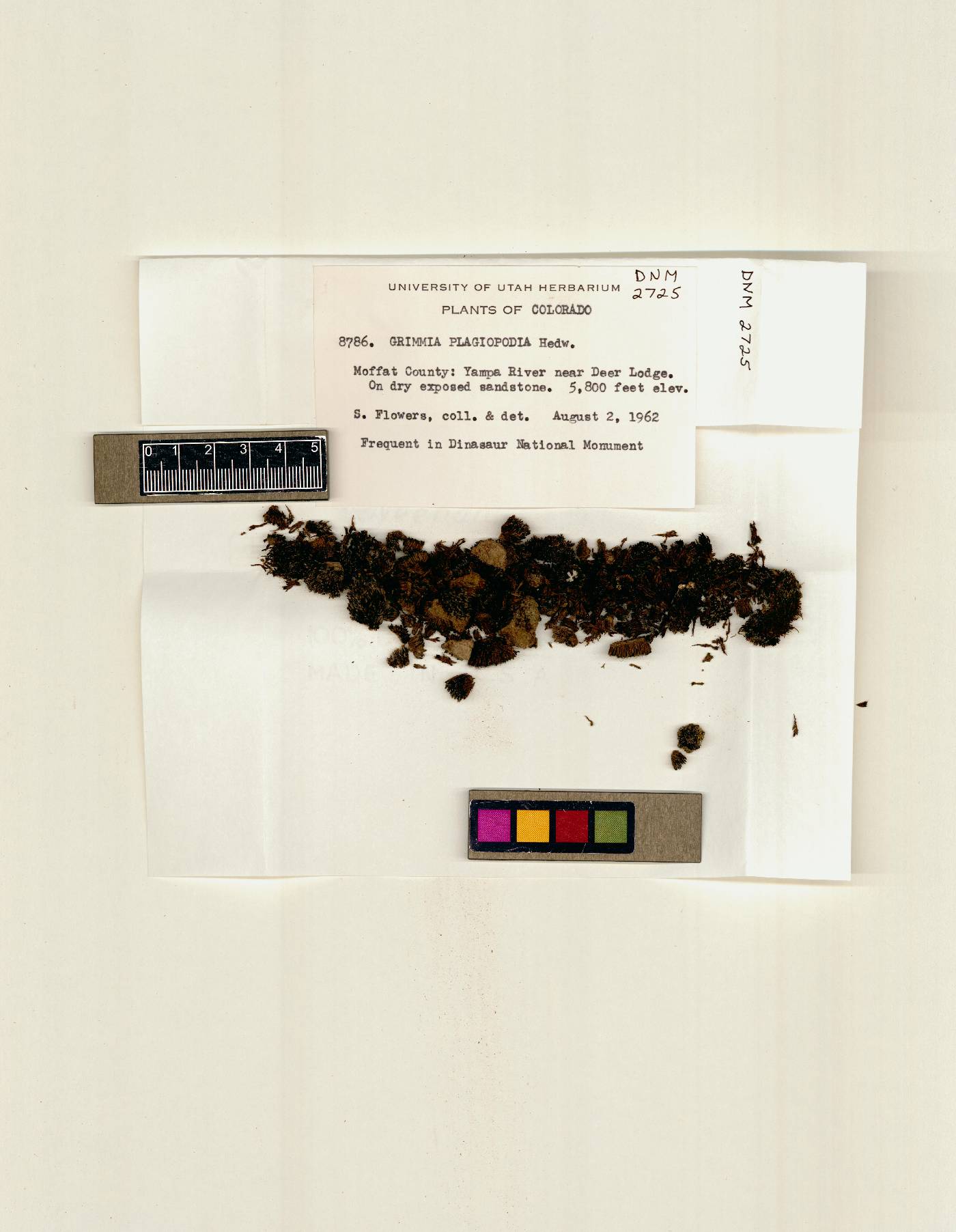Grimmia plagiopodia
|
|
|
|
Family: Grimmiaceae
|
Plants in dense cushions to hoary tufts, dark green to brown. Stems 0.3-0.5(-1) cm. Leaves oblong-ovate, 1-1.7 × 0.4-0.8 mm, concave-keeled, awn 0.3-1 mm; basal juxtacostal laminal cells quadrate to short-rectangular, straight, thin-walled; basal marginal laminal cells quadrate to short-rectangular, straight, thin-walled; medial laminal cells quadrate to short-rectangular, slightly sinuose, slightly thick-walled; distal laminal cells 1-stratose, marginal cells 1-2-stratose. Sexual condition gonioautoicous. Seta sigmoid, 0.2-0.3 mm. Capsule usually present, exothecial cells thin-walled, annulus absent, operculum mammillate, peristome present, fully developed, perforated and split in distal half. Exposed calcareous sandstone, limestone, occasionally concrete, and glacio-lacustrine silt; low to high elevations (50-2400 m); Greenland; Alta., B.C., N.W.T., Nunavut, Ont., Sask.; Alaska, Calif., Colo., Idaho, Ill., Iowa, Minn., Mont., Nebr., Nev., N.Mex., N.Dak., S.Dak., Utah, Wis., Wyo.; South America; Eurasia; Pacific Islands (New Zealand); Antarctic. Grimmia plagiopodia has a widespread and continuous distribution on calcareous rock across the northern Great Plains, reaching as far east as Illinois. It is rare in eastern North America, with a disjunct site in southern Ontario. In the west it reaches into the mountains on limestone and basic sandstone deposits, but its continuous range does not extend west of a line from Utah to south-central British Columbia. There is a disjunct location near Carson City, Nevada and Lake Tahoe, California. In the Arctic it is known from a few scattered localities extending from northwestern Greenland and nearby Ellesmere Island to the North Slope of Alaska. Compared to G. anodon, G. plagiopodia tends to occupy more prairie-like sites and is typically found at lower elevations. Commonly fertile, it is recognized by its immersed, peristomate capsule on a sigmoid seta with fully-developed teeth that are perforated and split distally. Grimmia americana is similar but has a short, straight to arcuate seta and a large annulus. The other widespread species in the group, G. anodon, has an annulus and is gymnostomous.
|


